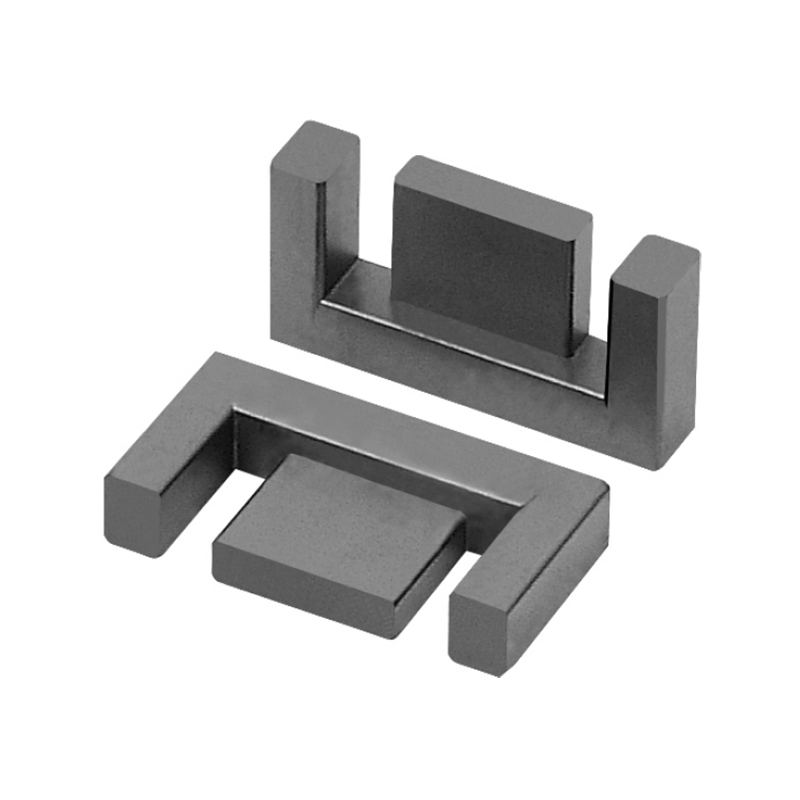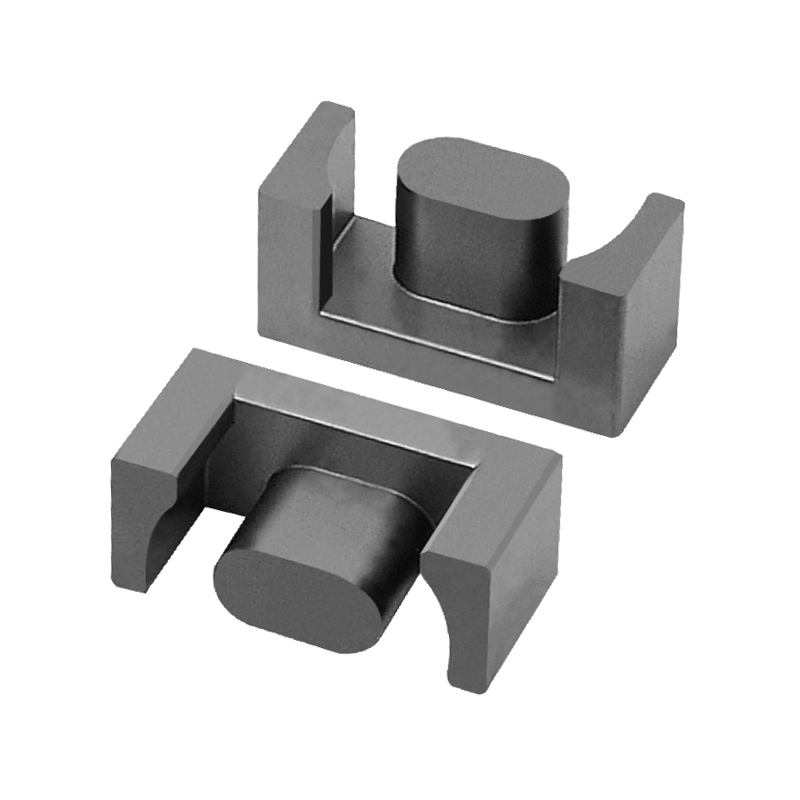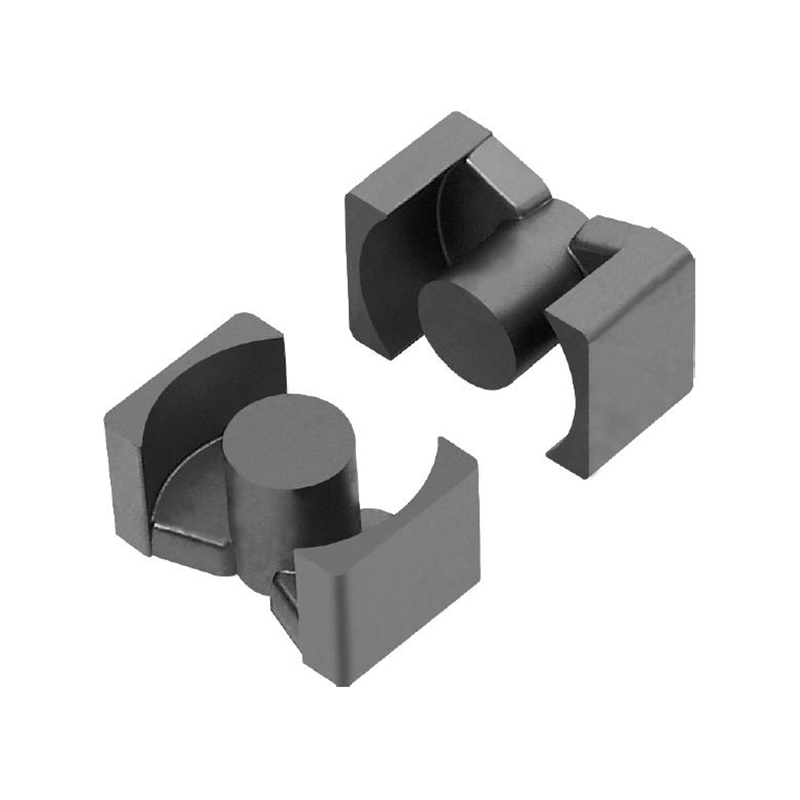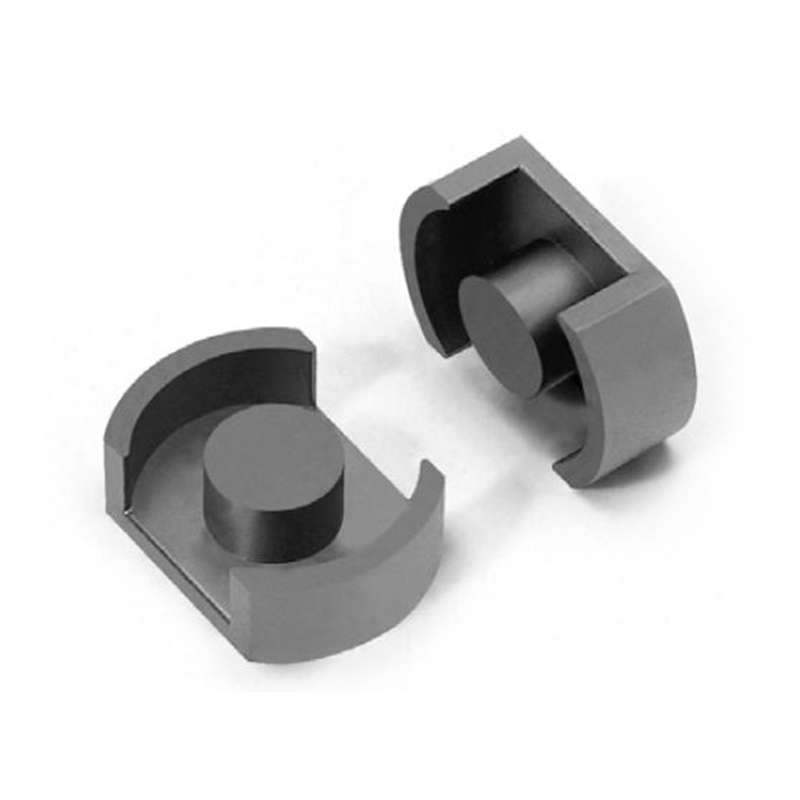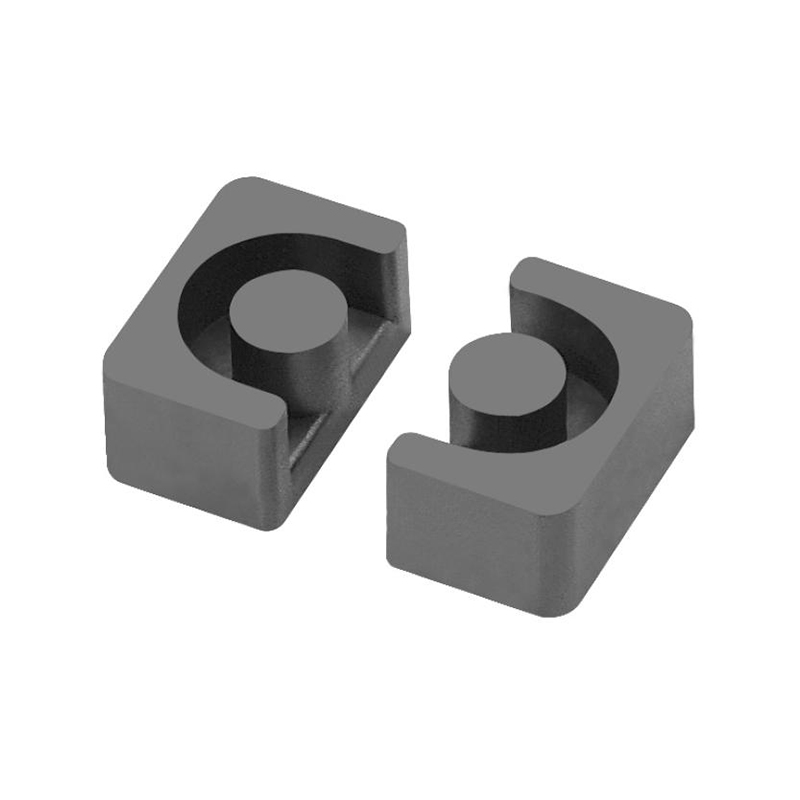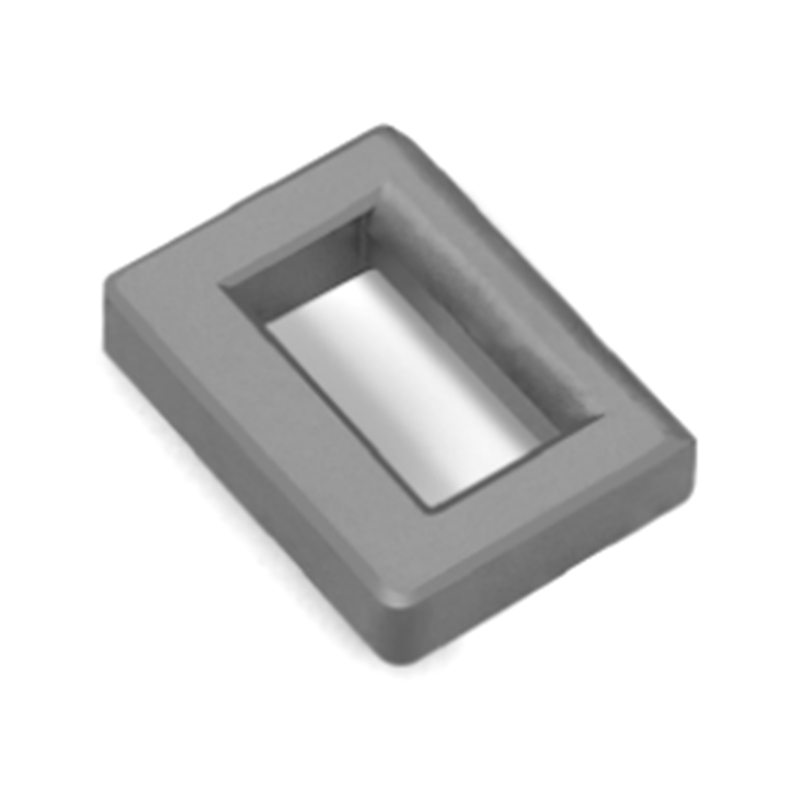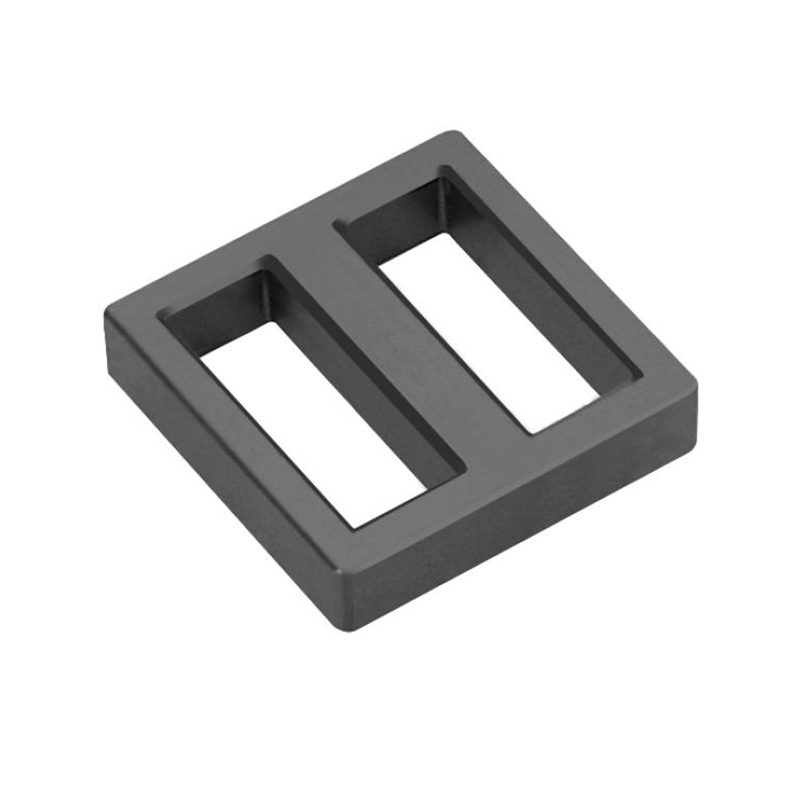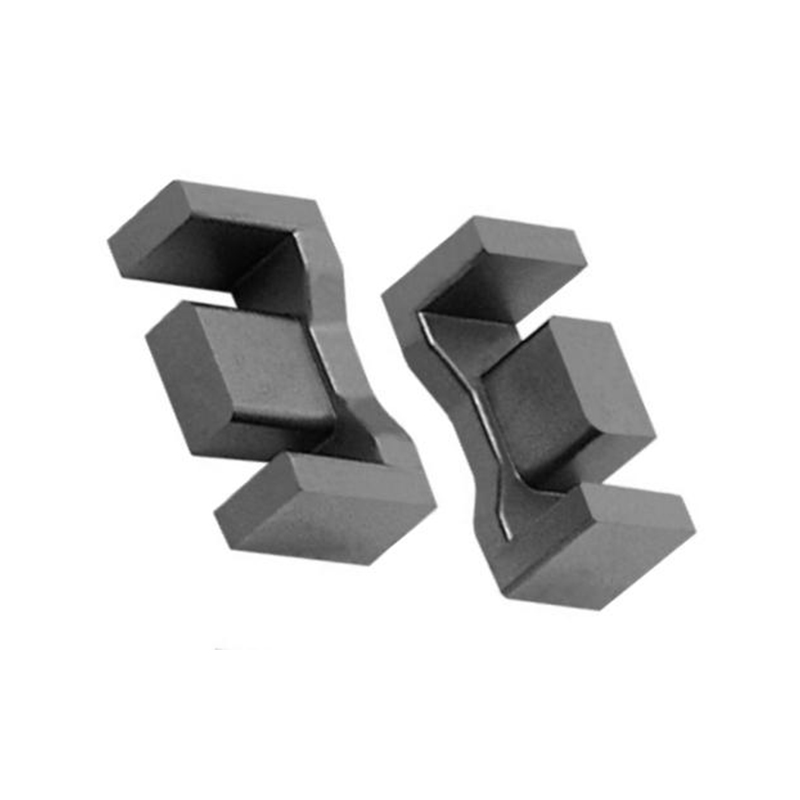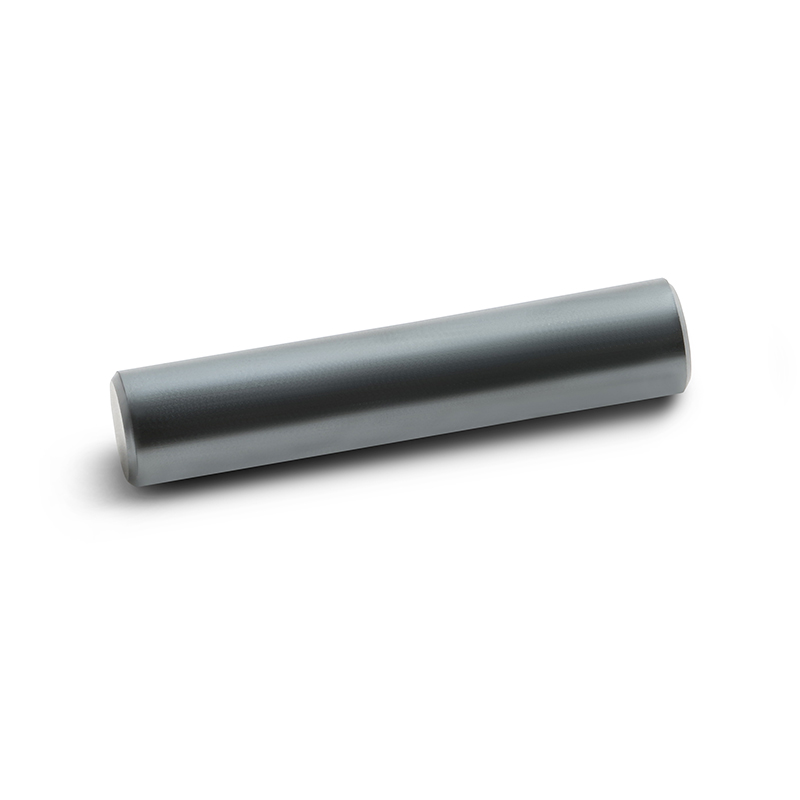Soft Magnetic Ferrites: An In - Depth Exploration
1. Introduction to Soft Magnetic Materials
Soft magnetic materials are a class of materials that are easily magnetized and demagnetized. They are characterized by low coercivity (the magnetic field intensity required to demagnetize a magnetized material), high magnetic permeability (a measure of how easily a material can be magnetized), and low magnetic hysteresis loss. These properties make them extremely useful in a wide range of electrical and electronic applications.
The significance of soft magnetic materials lies in their ability to efficiently convert electrical energy into magnetic energy and vice versa. In electrical power systems, they are crucial for the operation of transformers, which transfer electrical energy between different voltage levels. In electronic devices, they play key roles in components such as inductors and magnetic cores in transformers, enabling functions like filtering, energy storage, and signal processing.
2. Basics of Soft Magnetic Ferrites
2.1 Composition and Structure
Soft magnetic ferrites are a sub - type of soft magnetic materials. Their main components are ferric oxide (Fe2O3) combined with other metal oxides such as manganese (Mn), zinc (Zn), or nickel (Ni). For example, manganese - zinc (MnZn) ferrites typically have a chemical formula close to (Mn,Zn)Fe2O4, and nickel - zinc (NiZn) ferrites have a formula like (Ni,Zn)Fe2O4.
The crystal structure of soft magnetic ferrites is a spinel structure. In this structure, oxygen ions form a face - centered cubic lattice, and metal ions are distributed among the tetrahedral and octahedral interstitial sites. The distribution of metal ions affects the magnetic properties of the ferrite. For instance, in MnZn ferrites, the presence of Mn2+, Zn2+, and Fe3+ions in specific lattice sites determines its magnetic permeability and saturation magnetization.
2.2 Magnetic Properties
Magnetic Permeability: Soft magnetic ferrites exhibit high magnetic permeability, which can range from a few hundred to several thousand. High magnetic permeability means that a small external magnetic field can induce a large magnetic flux within the material. For example, in a transformer core made of MnZn ferrite, the high magnetic permeability allows for efficient transfer of magnetic energy from the primary winding to the secondary winding.
Saturation Magnetization (Bs): Saturation magnetization is the maximum magnetic flux density that a material can achieve when fully magnetized. Soft magnetic ferrites have relatively high saturation magnetization values, although they are generally lower than those of some metallic soft magnetic materials. In applications like inductors in power converters, the saturation magnetization of the ferrite core limits the maximum current that can be passed through the inductor without causing core saturation, which would lead to a loss of inductance.
Coercivity (Hc): As mentioned earlier, soft magnetic ferrites have low coercivity. This property allows them to be easily demagnetized when the external magnetic field is removed. In applications such as magnetic recording heads (which use soft magnetic materials in some designs), the low coercivity ensures that the head can quickly respond to changes in the magnetic signal being read or written.
Magnetic Losses: Soft magnetic ferrites are designed to have low magnetic losses, which include hysteresis loss and eddy - current loss. Hysteresis loss occurs due to the energy dissipated as the material is magnetized and demagnetized in an alternating magnetic field. Eddy - current loss is caused by the induced circular electric currents (eddy currents) within the material when it is exposed to a changing magnetic field. The high resistivity of ferrites helps to reduce eddy - current losses compared to some metallic magnetic materials.
3. Types of Soft Magnetic Ferrites
3.1 Manganese - Zinc (MnZn) Ferrites
Properties: MnZn ferrites are known for their high magnetic permeability at low to medium frequencies (up to a few MHz). They also have relatively high saturation magnetization, which makes them suitable for applications where a large magnetic flux is required. For example, in power transformers operating at frequencies around 50 - 60 Hz or in some low - frequency inductors in power supply circuits, MnZn ferrites can efficiently transfer and store magnetic energy.
Applications: They are widely used in power electronics applications. In switch - mode power supplies (SMPS), MnZn ferrite cores are used in transformers to step - up or step - down the voltage. They are also used in inductors for filtering purposes in power supplies, where they help to smooth out the DC output voltage by blocking high - frequency ripple currents. In audio transformers, MnZn ferrites can improve the quality of sound transmission by efficiently coupling the audio signals.
3.2 Nickel - Zinc (NiZn) Ferrites
Properties: NiZn ferrites have higher resistivity compared to MnZn ferrites, which makes them more suitable for high - frequency applications (above a few MHz and up to several GHz). They also have good temperature stability. Their magnetic permeability is generally lower than that of MnZn ferrites at low frequencies but can be adjusted to be suitable for high - frequency applications.
Applications: In the telecommunications industry, NiZn ferrites are used in antennas and filters. In wireless communication devices, they can help to tune the antenna to the desired frequency range and filter out unwanted electromagnetic interference. They are also used in high - frequency transformers in applications such as RF (radio - frequency) power amplifiers and in some high - speed digital circuits for signal isolation and impedance matching.
3. Types of Soft Magnetic Ferrites
3.1 Manganese - Zinc (MnZn) Ferrites
Properties: MnZn ferrites are known for their high magnetic permeability at low to medium frequencies (up to a few MHz). They also have relatively high saturation magnetization, which makes them suitable for applications where a large magnetic flux is required. For example, in power transformers operating at frequencies around 50 - 60 Hz or in some low - frequency inductors in power supply circuits, MnZn ferrites can efficiently transfer and store magnetic energy.
Applications: They are widely used in power electronics applications. In switch - mode power supplies (SMPS), MnZn ferrite cores are used in transformers to step - up or step - down the voltage. They are also used in inductors for filtering purposes in power supplies, where they help to smooth out the DC output voltage by blocking high - frequency ripple currents. In audio transformers, MnZn ferrites can improve the quality of sound transmission by efficiently coupling the audio signals.
3.2 Nickel - Zinc (NiZn) Ferrites
Properties: NiZn ferrites have higher resistivity compared to MnZn ferrites, which makes them more suitable for high - frequency applications (above a few MHz and up to several GHz). They also have good temperature stability. Their magnetic permeability is generally lower than that of MnZn ferrites at low frequencies but can be adjusted to be suitable for high - frequency applications.
Applications: In the telecommunications industry, NiZn ferrites are used in antennas and filters. In wireless communication devices, they can help to tune the antenna to the desired frequency range and filter out unwanted electromagnetic interference. They are also used in high - frequency transformers in applications such as RF (radio - frequency) power amplifiers and in some high - speed digital circuits for signal isolation and impedance matching.
4. Manufacturing Process of Soft Magnetic Ferrites
4.1 Raw Material Preparation
The manufacturing of soft magnetic ferrites starts with the selection and preparation of raw materials. High - purity metal oxides such as Fe2O3, MnO, ZnO, and NiO are commonly used. These raw materials need to be carefully weighed and mixed in the correct proportions according to the desired composition of the ferrite. For example, to produce MnZn ferrite, the appropriate amounts of Fe2O3, MnO, and ZnO are measured. The mixing process can be carried out using mechanical mixers or ball mills to ensure a homogeneous mixture.
4.2 Powder Processing
After mixing, the raw material powder is often subjected to further processing. One common method is calcination, where the powder mixture is heated to a high temperature (usually around 800 - 1000 °C) in a furnace. This process helps to pre - react the metal oxides, forming a more stable intermediate compound and reducing the porosity of the powder. After calcination, the powder may be milled again to reduce the particle size and improve its homogeneity.
4.3 Shaping
The processed powder is then shaped into the desired form. This can be done through various techniques such as pressing, injection molding, or extrusion. In pressing, the powder is placed in a mold and subjected to high pressure to form a compact shape. Injection molding is used when more complex shapes are required, such as in the production of small magnetic cores for electronic devices. The powder is mixed with a binder and injected into a mold under high pressure. Extrusion is suitable for producing long, continuous shapes like rods or tubes.
4.4 Sintering
The shaped ferrite parts are sintered at a very high temperature, typically between 1200 - 1400 °C. Sintering causes the particles in the compacted powder to bond together, increasing the density and improving the magnetic properties of the ferrite. During sintering, the microstructure of the ferrite changes, with grain growth occurring. The control of sintering temperature, time, and atmosphere is crucial as it can significantly affect the final magnetic properties of the soft magnetic ferrite. For example, a higher sintering temperature may lead to larger grain sizes, which can improve the magnetic permeability but may also increase the eddy - current losses if not properly controlled.
5. Applications of Soft Magnetic Ferrites
5.1 Power Electronics
Transformers: Soft magnetic ferrites are extensively used in transformers in power electronics. In grid - connected power inverters for renewable energy systems such as solar and wind power generation, MnZn ferrite cores are used in the transformers to step - up or step - down the voltage levels. They enable efficient power transfer between the DC side (from the solar panels or wind turbines) and the AC side (to the grid). In switch - mode power supplies, which are widely used in electronic devices to convert the input voltage to the required output voltage, ferrite transformers play a key role in providing electrical isolation and voltage transformation.
Inductors: Inductors made of soft magnetic ferrites are used for energy storage and filtering in power electronics circuits. In a buck - boost converter, an inductor with a ferrite core stores energy during the on - time of the switching device and releases it during the off - time, helping to regulate the output voltage. In power factor correction (PFC) circuits, inductors with ferrite cores are used to improve the power factor of the electrical load by storing and releasing reactive power.
5.2 Consumer Electronics
Mobile Phones: In mobile phones, soft magnetic ferrites are used in various components. For example, NiZn ferrite antennas are used to improve the reception and transmission of wireless signals. They help the phone to communicate more effectively with the cellular network, Wi - Fi routers, and Bluetooth devices. Ferrite beads are also used in the power and signal lines of mobile phones to suppress high - frequency electromagnetic interference, ensuring the proper operation of the sensitive electronic components inside the phone.
Laptops and Tablets: In laptops and tablets, soft magnetic ferrites are used in the power supplies to convert the input voltage to the appropriate voltage levels for different components. The transformers and inductors in these power supplies use ferrite cores to achieve high - efficiency power conversion. They are also used in the magnetic shielding of hard disk drives to prevent electromagnetic interference from affecting the data storage and retrieval process.
5.3 Automotive Electronics
Electric Vehicle (EV) Motors: In electric vehicles, soft magnetic ferrites are used in the motors. The stator and rotor cores of some EV motors may use ferrite materials due to their good magnetic properties and relatively low cost. The use of soft magnetic ferrites in EV motors helps to improve the efficiency of the motor by reducing magnetic losses. This, in turn, increases the driving range of the electric vehicle.
Vehicle Electronics Systems: In the various electronics systems in a vehicle, such as the audio system, navigation system, and engine control unit, soft magnetic ferrites are used in transformers, inductors, and filters. They help to provide stable power supply and reduce electromagnetic interference, ensuring the reliable operation of these systems in the harsh electromagnetic environment of a vehicle.
5.4 Telecommunications
Antennas: As mentioned earlier, NiZn ferrites are commonly used in antennas for wireless communication. In 5G base stations, ferrite - loaded antennas can improve the radiation efficiency and directivity of the antennas. They help to transmit and receive high - frequency signals over long distances with less signal loss. In mobile phone antennas, ferrite materials can enhance the signal strength and quality, especially in areas with weak network coverage.
Filters and Isolators: Soft magnetic ferrites are used in filters and isolators in telecommunications networks. Filters made of ferrite materials can selectively pass or block certain frequency bands, helping to separate different signals in a communication system. Isolators, which are used to prevent the reflection of signals, often use ferrite materials to achieve the required non - reciprocal magnetic properties.
6. Future Trends and Challenges in Soft Magnetic Ferrites
6.1 Trends
Miniaturization and Integration: With the continuous development of electronic devices towards smaller size and higher functionality, there is a trend towards the miniaturization and integration of soft magnetic ferrite components. This requires the development of new manufacturing techniques to produce smaller and more complex ferrite parts with precise magnetic properties. For example, in the future, we may see even smaller ferrite - based inductors and transformers integrated directly onto printed circuit boards (PCBs) to save space in electronic devices.
Higher Frequency Applications: As the demand for high - speed data transmission and communication increases, soft magnetic ferrites will need to be developed for even higher frequency applications. This means improving their magnetic properties, such as maintaining high magnetic permeability and low losses at frequencies well into the GHz range. New types of ferrite materials or composite materials with enhanced high - frequency performance may be developed.
Sustainable and Green Manufacturing: There is a growing emphasis on sustainable and green manufacturing in all industries, including the production of soft magnetic ferrites. This involves using more environmentally friendly raw materials, reducing energy consumption during the manufacturing process, and minimizing waste. For example, efforts may be made to use recycled metal oxides as raw materials or to develop more energy - efficient sintering processes.
6.2 Challenges
Raw Material Supply and Cost: The availability and cost of raw materials for soft magnetic ferrites can be a challenge. Some of the metal oxides used, such as certain grades of Fe2O3, MnO, and NiO, may be subject to supply disruptions or price fluctuations due to factors like mining availability and geopolitical issues. Finding alternative sources of raw materials or developing more efficient extraction and recycling methods will be important to ensure a stable supply and control costs.
Meeting Stringent Performance Requirements: As applications become more demanding, soft magnetic ferrites need to meet increasingly stringent performance requirements. For example, in high - power applications in electric vehicles and power grids, ferrites must have high saturation magnetization, low losses, and excellent temperature stability over a wide range of operating conditions. Developing new ferrite compositions and manufacturing processes to meet these requirements is a significant challenge.
Competition from Alternative Materials: There is competition from alternative magnetic materials, such as amorphous and nanocrystalline alloys, which also offer good magnetic properties. Soft magnetic ferrites need to continuously improve their performance - to - cost ratio to remain competitive. This may involve further optimizing their manufacturing processes to reduce costs while maintaining or improving their magnetic performance.

 中文简体
中文简体